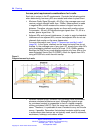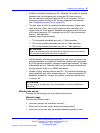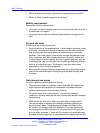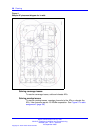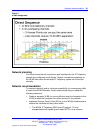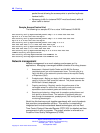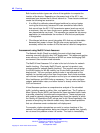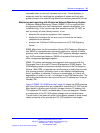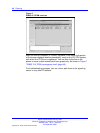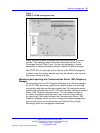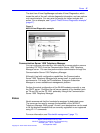
42 Planning
Both location-solution types use a form of triangulation to compute the
location of the device. Depending on the power level of the AP, it can
sometimes hear devices that it cannot transmit to. These factors combined
create the following two scenarios:
•
It is difficult to calibrate network-based solutions by using a laptop
running the site survey, because APs can sometimes hear clients
that cannot hear the AP. If AP transmission power levels are not at
a maximum, they can hear clients over a greater distance than their
own transmissions can travel. This scenario can cause the site survey
application to underestimate the number of APs that can participate
in triangulation.
•
Client-based solutions cannot triangulate APs that are not detectable
because their power is lower. But the site survey application can
accurately reflect the number of APs that can be used for triangulation.
Assessment using NetIQ Vivinet Assessor
The Network Health Check is probably the most critical step toward
ensuring a smooth rollout for any VoIP deployment. This statement applies
even more so to VoWLAN, because a WLAN is a more challenging QoS
environment than modern wired networks.
The NetIQ Vivinet Assessor 3.0 or later is the tool of choice for network
health checking. (Previously NetIQ Chariot, now an Ixia product, was
recommended for network health checking.) This product uses a laptop
(for WLAN testing for WLAN mobility) as a voice-traffic generation and
analysis tool. You can configure several nodes in various parts of the
network, to simulate calls to and from those areas. Each node simulates
call volumes through traffic generation so that you can stress-test access
links, backbones, and WAN links as necessary. You can also configure
codecs, packetization rates, and other factors to closely mimic the future
VoIP environment.
Vivinet Assessor performs a comprehensive analysis of the simulated
traffic, including reports on delay, jitter, and packet loss. The R values or
Mean Opinion Score (MOS) are reported for these simulated traffic loads
to provide a baseline for performance expectations. These analyses are
also used for capacity planning because they show the capacity at which
the Quality of Experience (QoE) ratings start to fall. More importantly, the
process of analyzing the network reveals many latent network problems
that can otherwise remain undetected until deployment.
For example, duplex mismatches can exist in various locations of the
network, and data applications, being very tolerant to packet loss, typically
do not reveal the problem unless it is severe. The issue is immediately
Nortel Communication Server 1000
WLAN IP Telephony Installation and Commissioning
NN43001-504 03.04 Standard
23 September 2008
Copyright © 2004–2008 Nortel Networks
.



